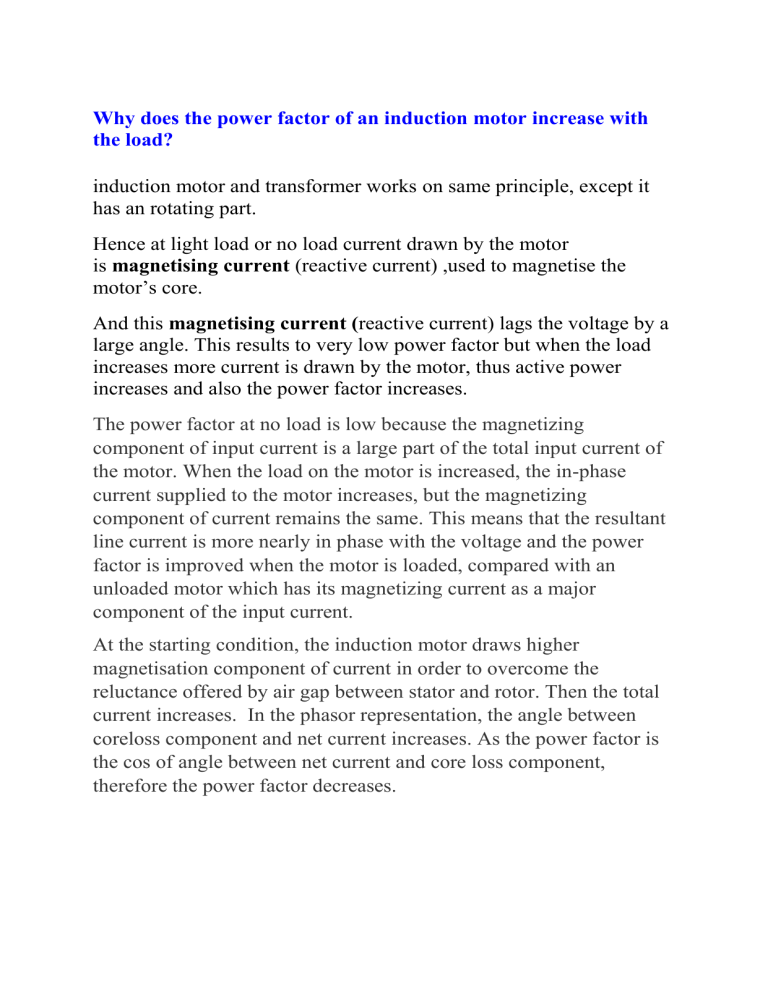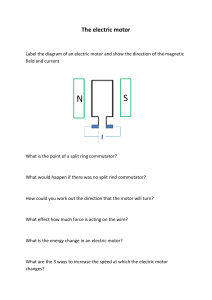
Why does the power factor of an induction motor increase with the load? induction motor and transformer works on same principle, except it has an rotating part. Hence at light load or no load current drawn by the motor is magnetising current (reactive current) ,used to magnetise the motor’s core. And this magnetising current (reactive current) lags the voltage by a large angle. This results to very low power factor but when the load increases more current is drawn by the motor, thus active power increases and also the power factor increases. The power factor at no load is low because the magnetizing component of input current is a large part of the total input current of the motor. When the load on the motor is increased, the in-phase current supplied to the motor increases, but the magnetizing component of current remains the same. This means that the resultant line current is more nearly in phase with the voltage and the power factor is improved when the motor is loaded, compared with an unloaded motor which has its magnetizing current as a major component of the input current. At the starting condition, the induction motor draws higher magnetisation component of current in order to overcome the reluctance offered by air gap between stator and rotor. Then the total current increases. In the phasor representation, the angle between coreloss component and net current increases. As the power factor is the cos of angle between net current and core loss component, therefore the power factor decreases.






